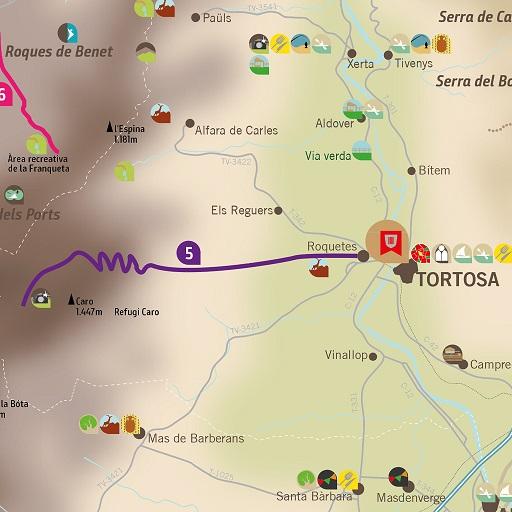Route 5. Caro
Departure point: Roquetes
Duration: full day
Route by car: 21,5 km
Circular: no
Roquetes is the starting point for this route, more specifically the Els Ports Natural Park Visitor's Centre. Take the road from Els Reguers towards Caro. It is worth making a stop on this plain that forms a sea of olive trees, especially in the areas near the foothills of the mountains, since from there you can see the flight of griffon vultures, golden eagles or Bonelli's eagles, while also enjoying several species of thrushes, large flocks of common finches as well as some bramblings and small passerines that take advantage of the abundance of fruits and insects. But one of the most characteristic species of this landscape are the woodlarks that flood the area with their songs. Begin the ascent towards the highlands, first passing through Mediterranean environments where the Dartford warbler, subalpine warbler, blue rock thrush or black wheatear live, until you reach the first rocky areas where during winter months you can see wallcreepers and alpine accentors looking for food by the side of the road. Then, you arrive at a small, urbanized area where the pine forests hide a wide range of forest species such as the red crossbill, crested tit, nuthatch and bullfinch. In higher areas you can find birds that feed on juniper fruits, such as the ring ouzel or song thrush.
In the final part of the climb, you will surely notice the presence of mountain goats, some of them very trusting. You should also be attentive to the vegetation around the edges because they are the habitat of rock buntings and European common accentors. This route ends at the Mirador de Caro (1,441 m) where there are excellent views of the plain and Els Ports. With a bit of luck, you will be able to see the bearded vulture, a species recently reintroduced in the massif.
Phenology:
To see wallcreepers and alpine accentors wait for the cold months between November and February. The abundance of fruits, between October and January, attracts a greater number of birds, especially thrushes and finches. The continuous presence of large birds of prey makes this route of interest throughout the year.
Track GPX
We also make the route file available to you in gpx format so that you can use it with your GPS device (see link in the header).






